MICHIGAN HISTORY
Michigan and World War I
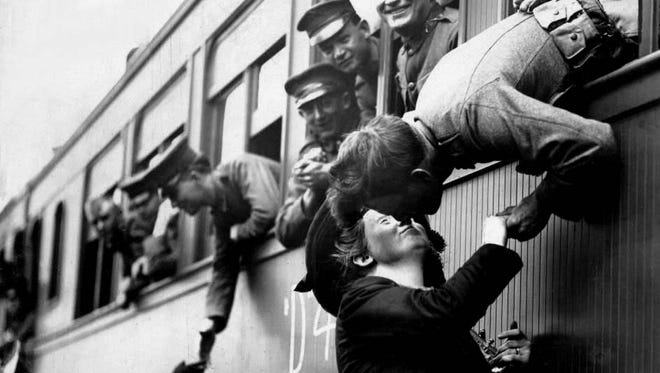
A solider tries to steal a kiss before his troop train pulls out of Michigan Central Depot in Detroit during World War I. "The war to end all wars" started in July 1914 with the assassination of Austria's Archduke Ferdinand and ended Nov. 11, 1918. We look here at the war and Michigan's part in it.
The Detroit News Archives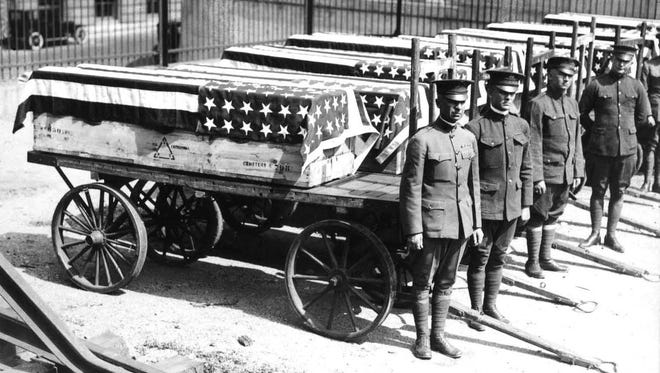
More than 135,000 Michigan men served in World War I, yet exact numbers on fatalities and injuries can only be estimated. About 5,000 men from Michigan are believed to have lost their lives.
The Detroit News Archives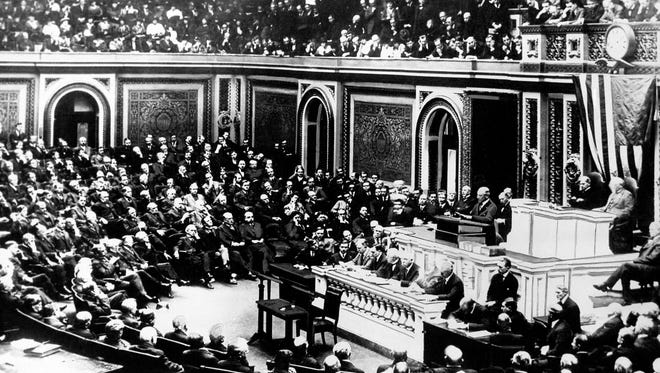
President Woodrow Wilson delivers a declaration of war to a joint session of Congress, April 2, 1917.
Associated Press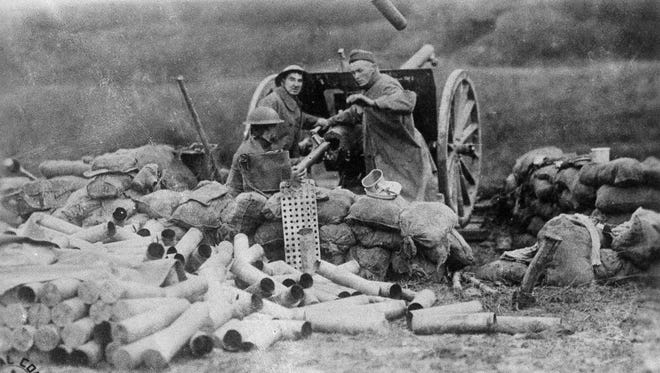
Battery "C", Sixth F.A., 1st Division, which fired the first cannon shot from the U.S. on the Lorraine, France, front at Beaumont during the Great War, Sept. 12, 1918.
Associated Press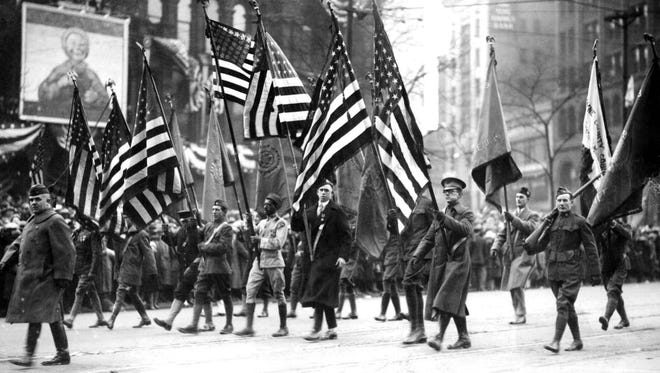
Soldiers march in a conscription parade in Detroit during World War I to encourage more recruits to join the war effort.
The Detroit News Archives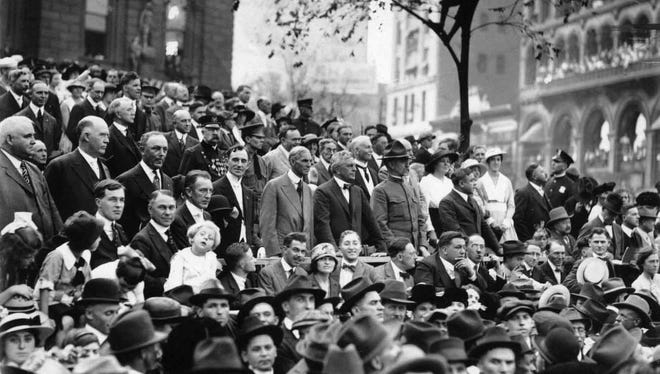
Crowds stand and watch a conscription parade in Detroit during World War I. Henry Ford can be seen in the middle of the crowd.
The Detroit News Archive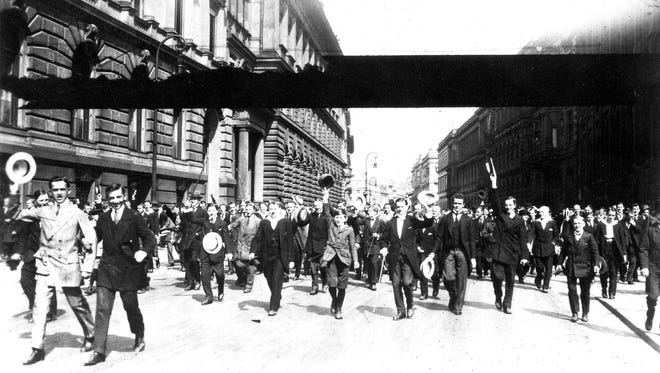
Just as the Allied countries geared up for war, so did those of the Central powers. Here German volunteers march on a street to join the army for the Great War, August 1914.
Associated Press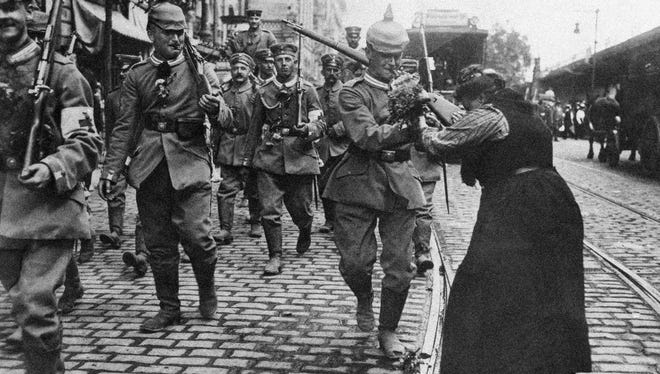
Girls and women throw flowers to Prussian guard infantry in new field gray uniforms as they leave Berlin, Germany, to train for the front in August 1914 during World War I.
Associated Press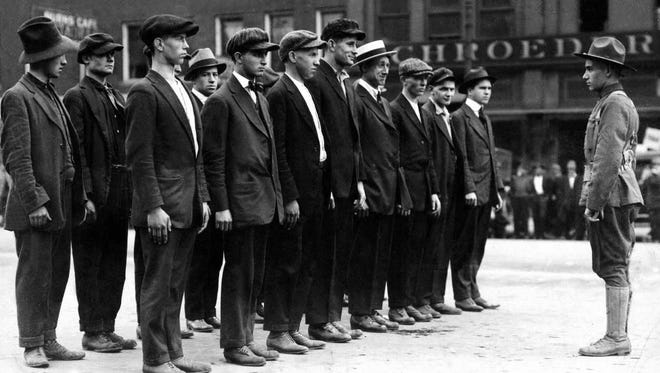
Young recruits stand in formation in front of a military official in Detroit during World War I.
The Detroit News Archives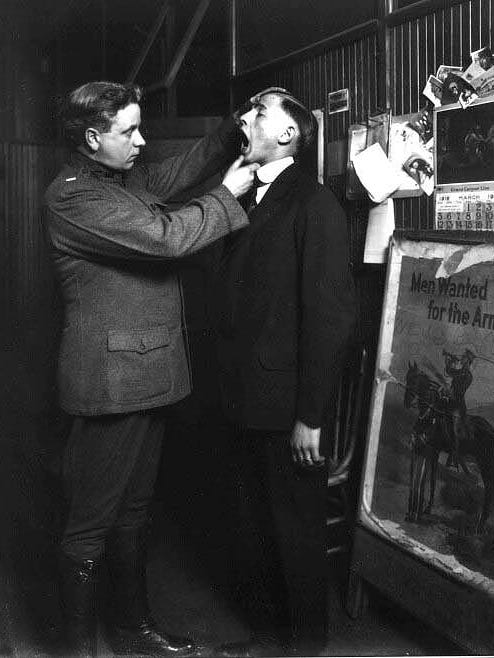
A recruit is given a medical exam, circa 1916.
The Detroit News Archives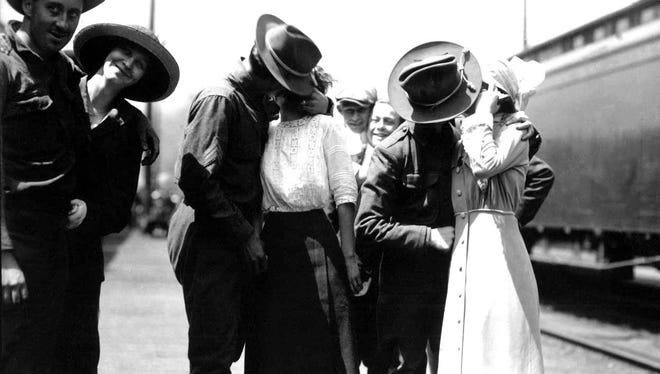
Young ladies wish their military men farewell at the train station during the First World War.
The Detroit News Archives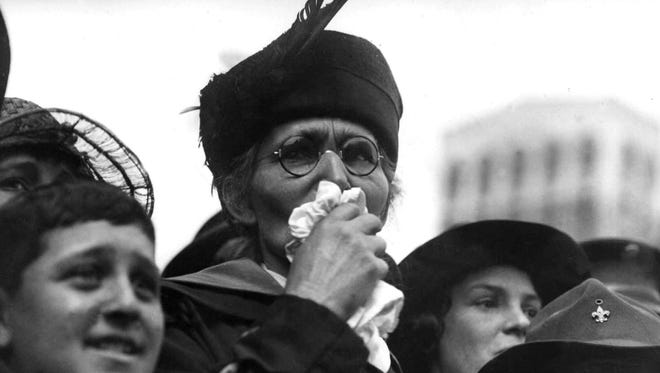
Families see their loved ones off to war.
The Detroit News Archives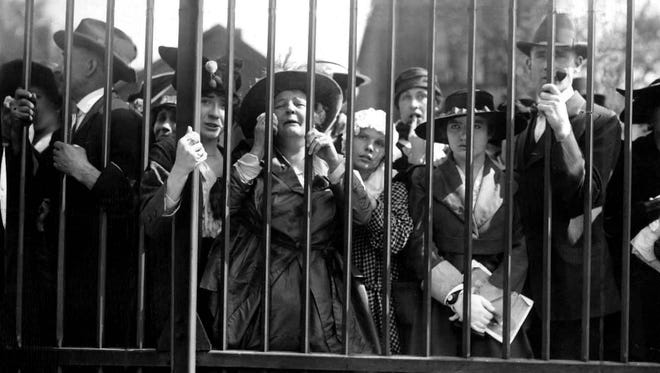
A mother cries at the train shed gates at the Michigan Central Depot in Detroit as she and others watch men head off to war.
The Detroit News Archives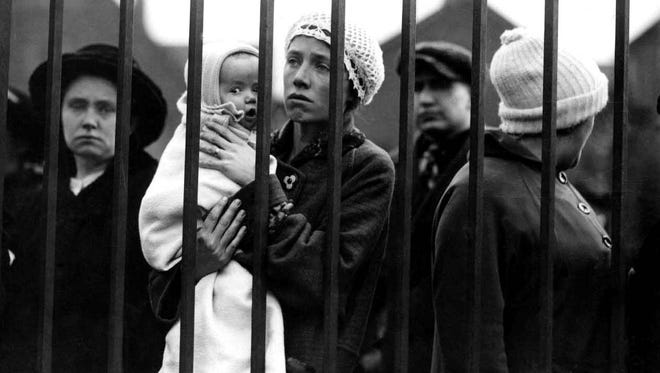
A young woman holds a baby at the train sheds as soldiers leave for World War I, circa 1917.
The Detroit News Archives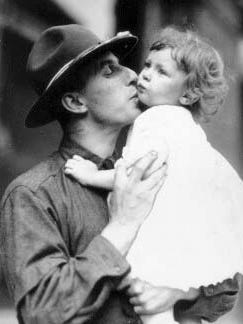
A father drafted into World War I kisses his child goodbye in Detroit.
The Detroit News Archives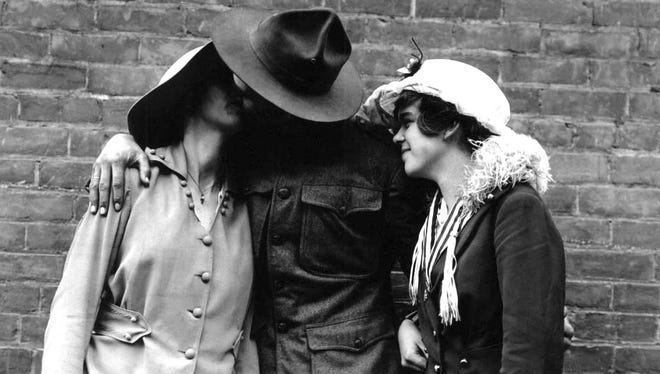
A solider kisses his sweetheart goodbye.
The Detroit News Archives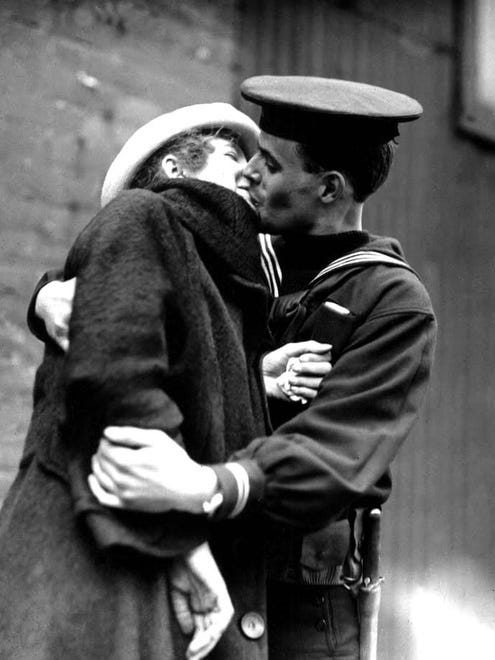
This sailor is making the most of a kiss from his sweetheart.
The Detroit News Archives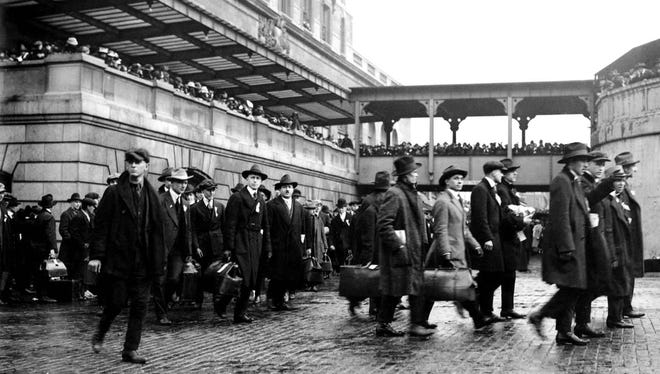
Recruits head off to war at Michigan Central Depot in Detroit as family members watch.
The Detroit News Archives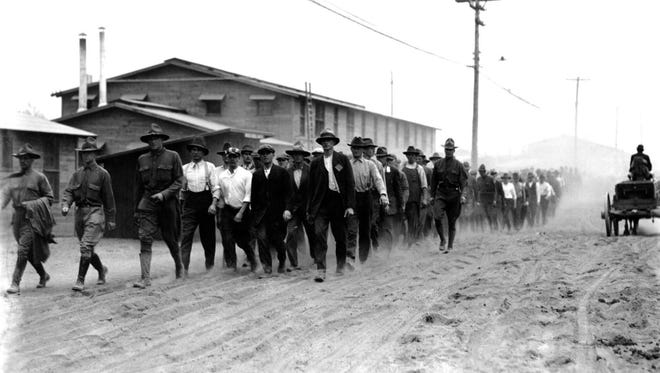
Recruits arrive at U.S. Army Camp Custer near Battle Creek, Mich. Camp Custer was built in 1917 for military training during World War I.
The Detroit News Archives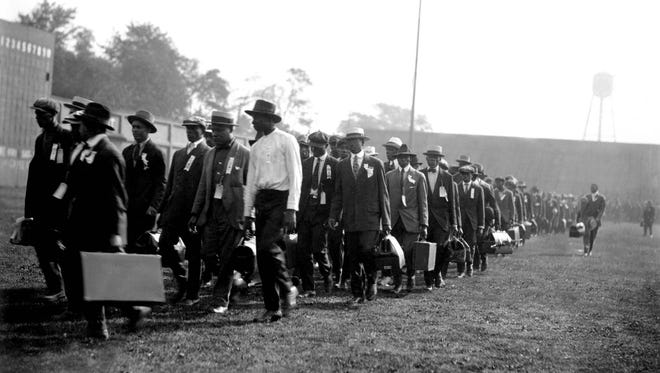
Black recruits arrive at Camp Custer for training during World War I. The black soldiers were segregated for training, service and social activities.
The Detroit News Archives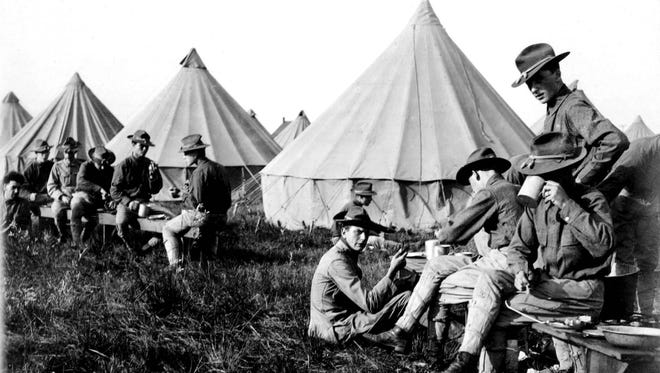
Soldiers sit around their tents and eat a meal at U.S. Army Camp Custer during World War I.
The Detroit News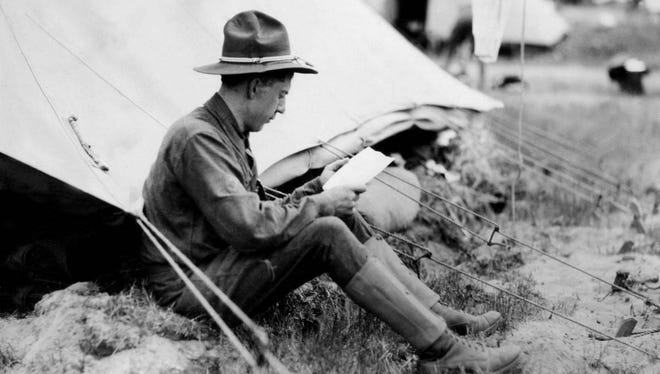
A soldier writes a letter at U.S. Army Camp Custer near Battle Creek.
The Detroit News Archives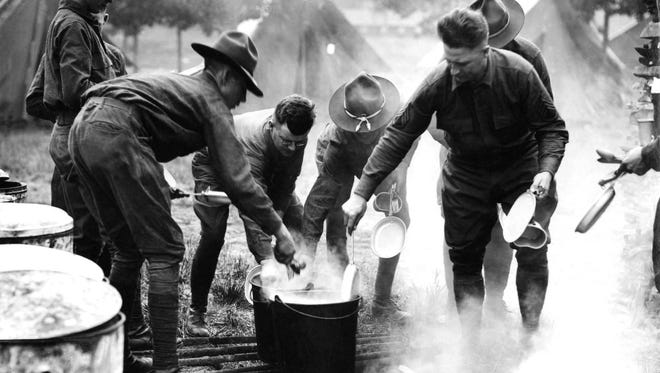
Soldiers at Camp Custer ladle their food at mess.
The Detroit News Archives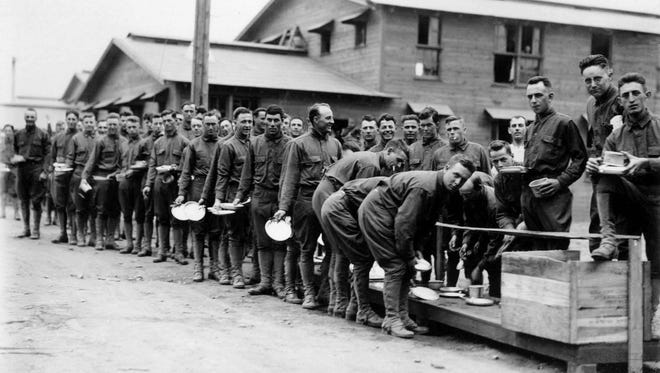
Soldiers wait in line for food.
The Detroit News Archives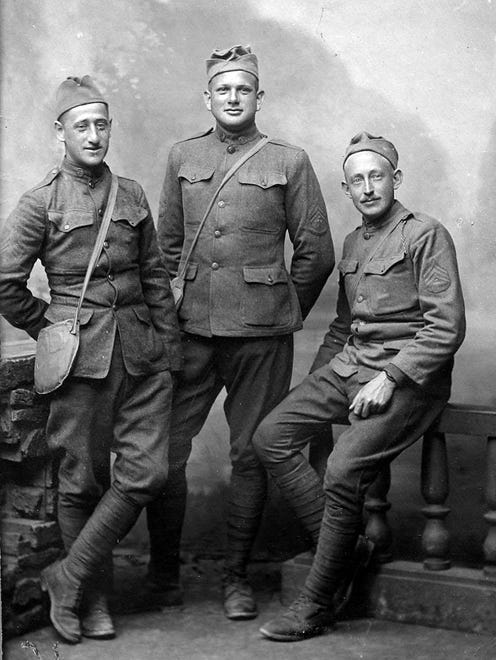
Sgt. Charles W. Carman, center, was a horseshoer in Madison, Wis., when President Wilson activated the National Guard units in Michigan and Wisconsin to fight in World War I.
Photo Courtesy Diane Carman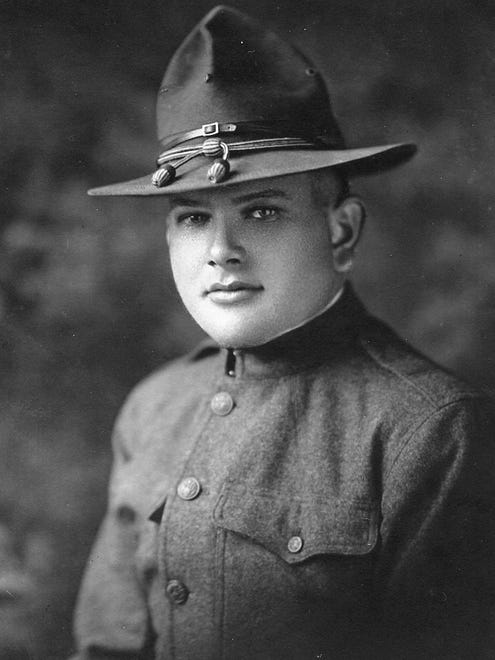
Sgt. Charles W. Carman served in the 32nd Division.
Photo Courtesy Diane Carman.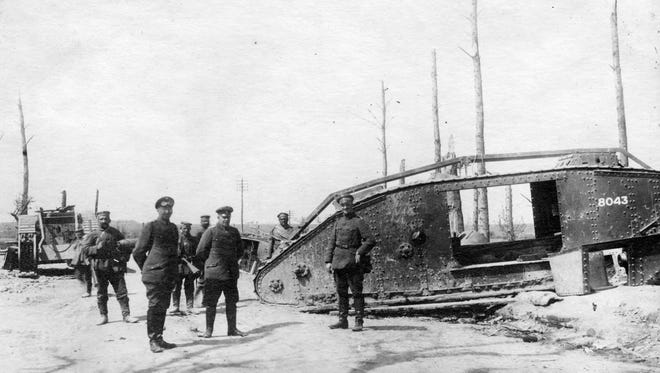
Members of the 32nd Division, which was commended for courage ina letter from President Theodore Roosevelt, with a destroyed German tank, date unknown.
Photo Courtesy Diane Carman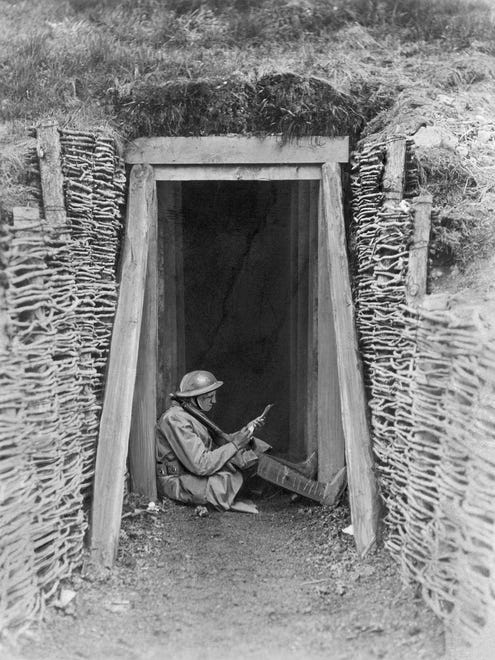
U.S. Artilleryman Fuist Dern, in the doorway of his bombproof shelter, uses a few peaceful moments to write home on March 7, 1918. The war sent millions of men into the trenches for months at a time, as what began as a temporary strategy evolved into a stalemate as neither of the opposing sides was able to gain ground.
Associated Press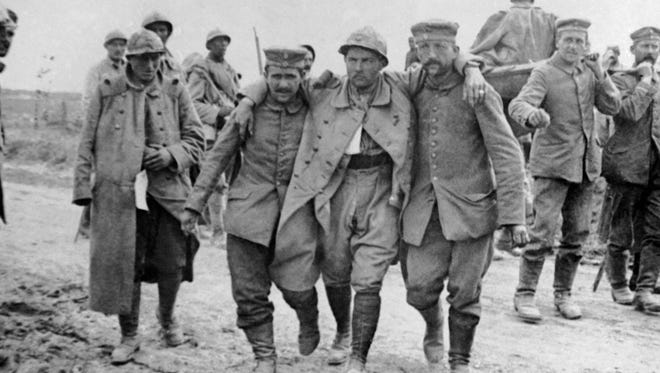
French soldiers as they bring back their booty from the last contest in the Somme, France, in an undated photo.
Associated Press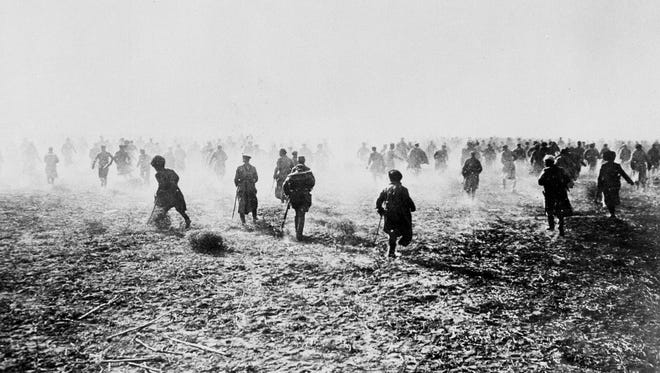
A Russian battlefield in 1917. Exact date and location are unknown.
Associated Press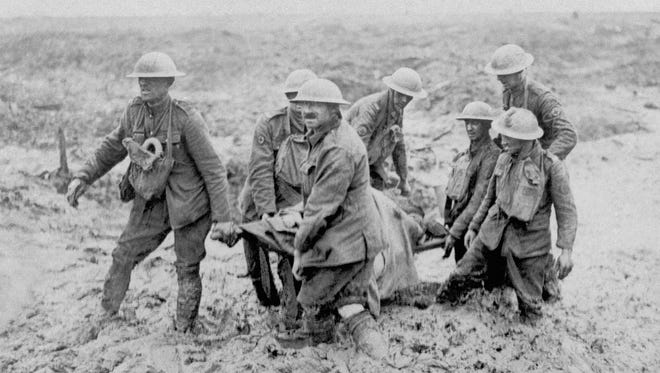
A stretcher bearer patrol makes its way through mud near Bol Singhe during the British advance in Flanders; some of the men were nearly knee deep in the swampy ground, Aug. 20, 1917.
Associated Press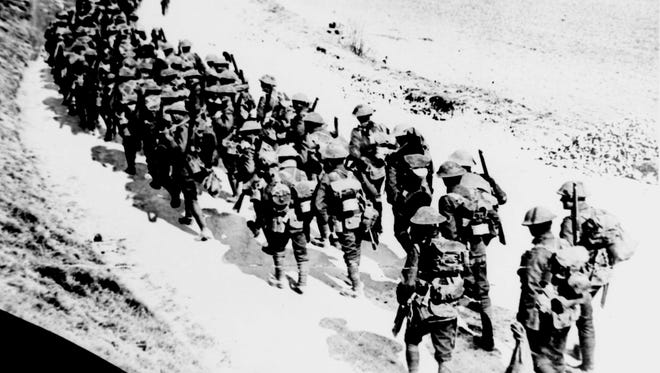
British infantry Tommys go forward to meet the German advance on the Western Front during the Great War on Easter Sunday, March 31, 1918.
Associated Press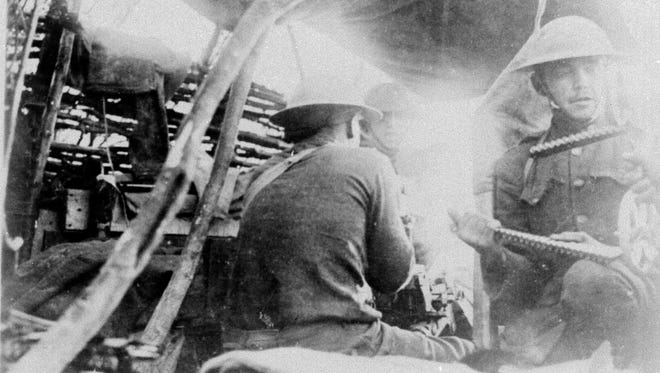
U.S. troops of the 27th Division are pictured machine gunning the enemy during the Great War, May 20, 1918, location unknown.
Associated Press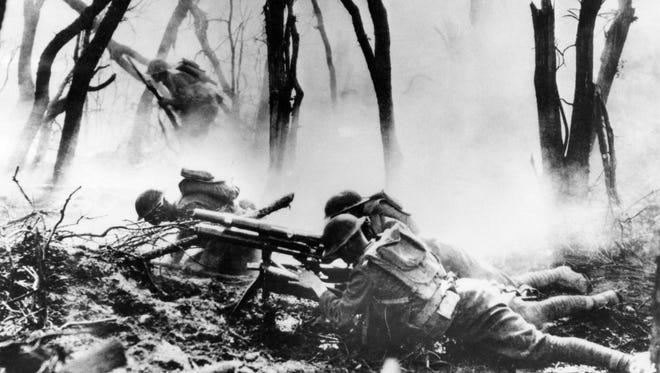
A U.S. Army gun crew mans its 37-mm weapon on Sept. 26, 1918, during the Meuse-Argonne Allied offensive in France.
Associated Press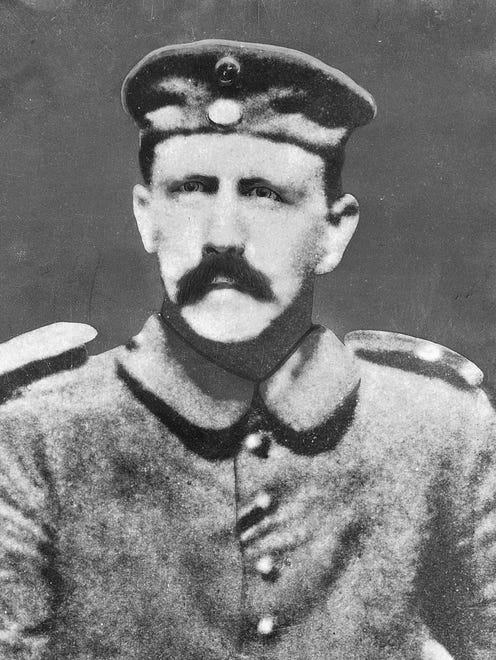
A 1916 photo of Cpl. Adolf Hitler of the German army. Hitler was an Austrian subject, but he asked for permission to serve in the Bavarian Army in August 1914. While he was serving in the army, he began to put forth his German nationalist ideas. After Germany's defeat, he later formed the National Socialist Party, and led the world into another war.
Associated Press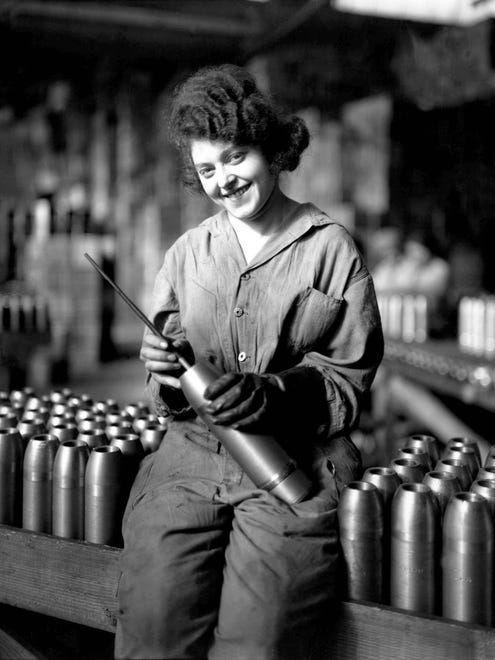
The image of "Rosie the Riveter" and women working in defense plants is usually associated with World War II. But in Detroit, legions of earlier "Rosies" worked in World War I munitions plants, like this young worker in the Maxwell Motor company.
The Detroit News Archives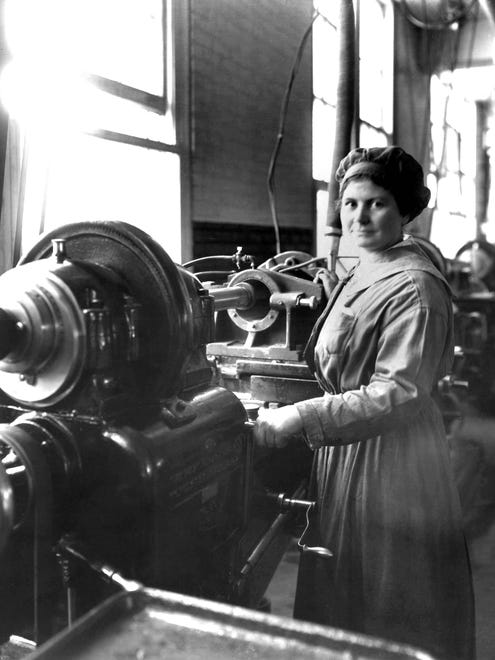
Munitions worker at the Lincoln Motor Co.
THe Detroit News Archives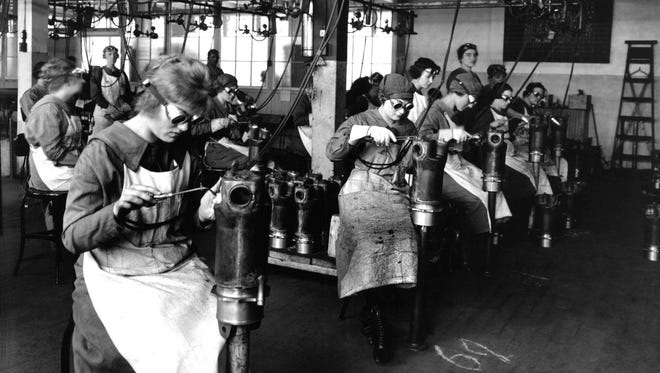
A room full of female munitions workers weld machine parts at the Lincoln Motor Co. during World War I.
The Detroit News Archives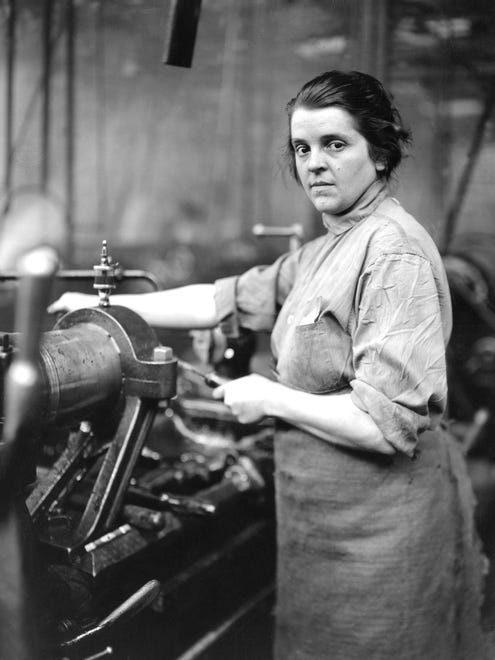
A munitions worker pauses while she works at the Lincoln Motor Co. during World War I.
The Detroit News Archives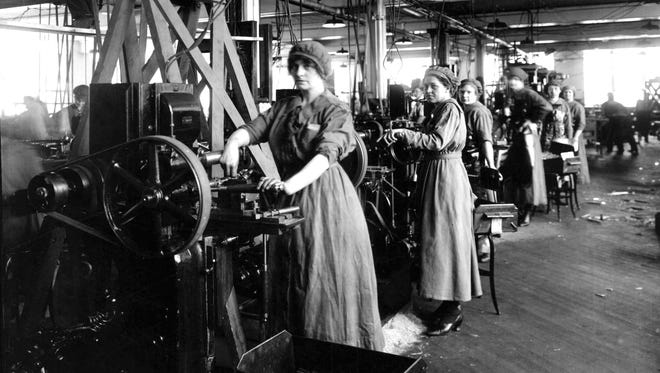
Munitions workers at the Lincoln Motor Co.
The Detroit News Archives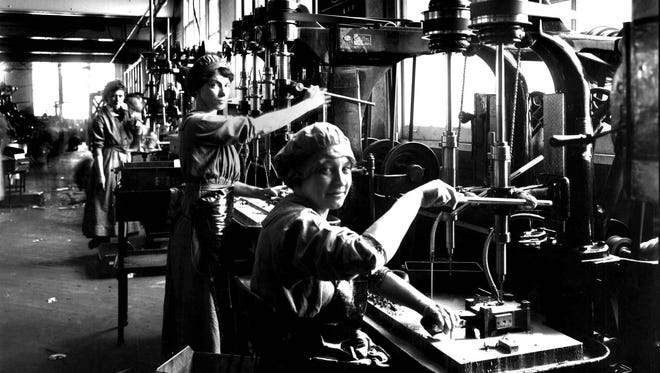
Workers operate drill presses in a munitions shop during the First World War.
The Detroit News Archives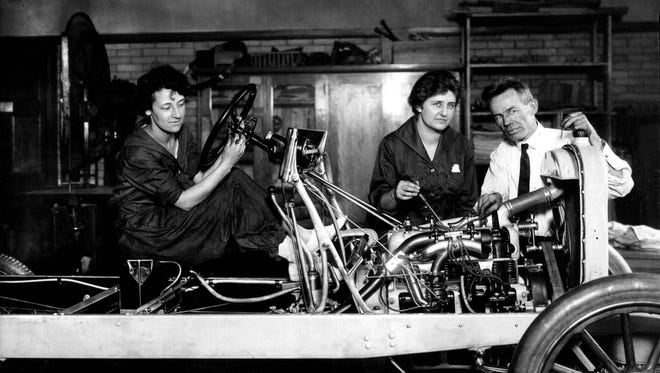
Two women work on an auto chassis with a male supervisor during the First World War.
The Detroit News Archives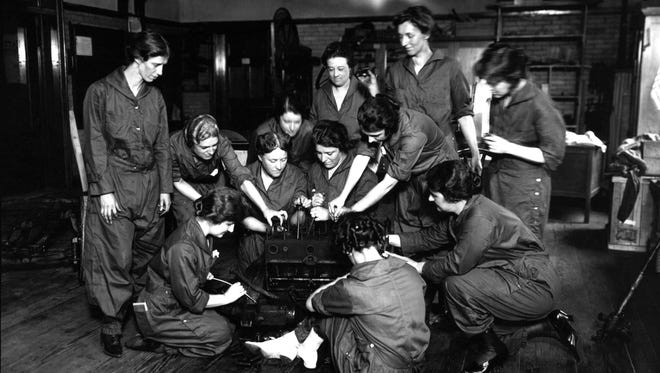
A group of auto factory employees work on a piece of machinery during World War I. With so many men serving in the war, women replaced them in other jobs.
The Detroit News Archives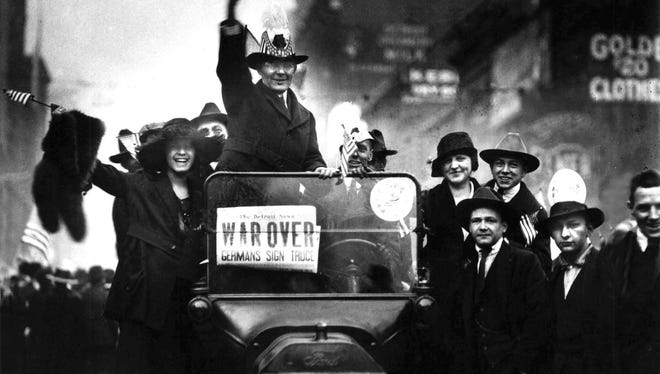
Crowds on Woodward Avenue in Detroit celebrate the end of the First World War.
The Detroit News Archives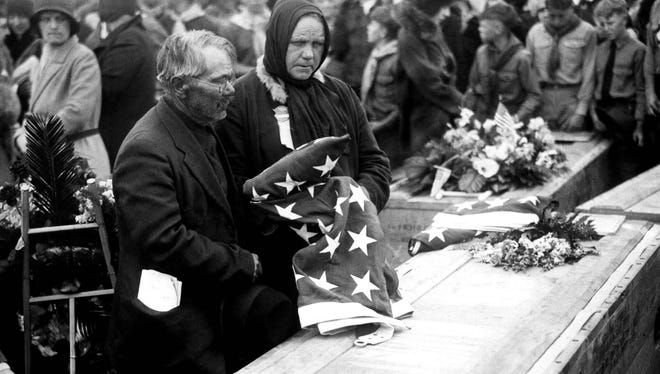
Mr. and Mrs. Frank Skocelas, parents of Pvt. Andrew Skocelas, grieve at a memorial service for members of the 339th Infantry brigade killed in Russia. The Polar Bear Expedition was a contingent of about 5,000 United States Army troops, many from Michigan, that fought the revolutionary Red Army in Russia at the end of and after World War I, from September 1918 through July 1919.
The Detroit News Archives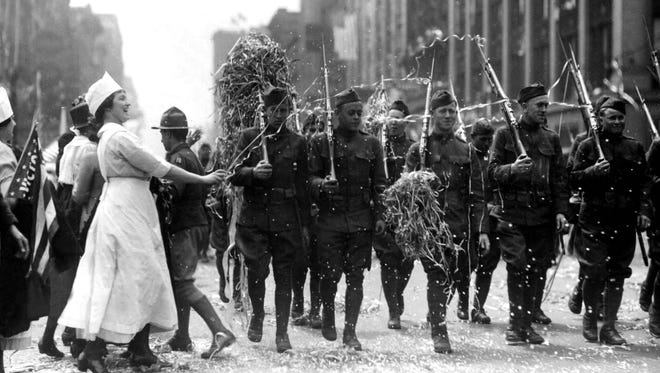
Joyous Detroiters greet soldiers returned home from World War I.
The Detroit News Archives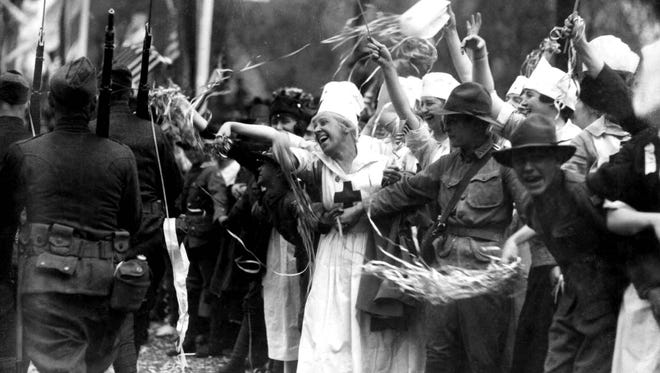
Crowds of ecstatic Detroiters greet the returning doughboys after the war.
The Detroit News Archives